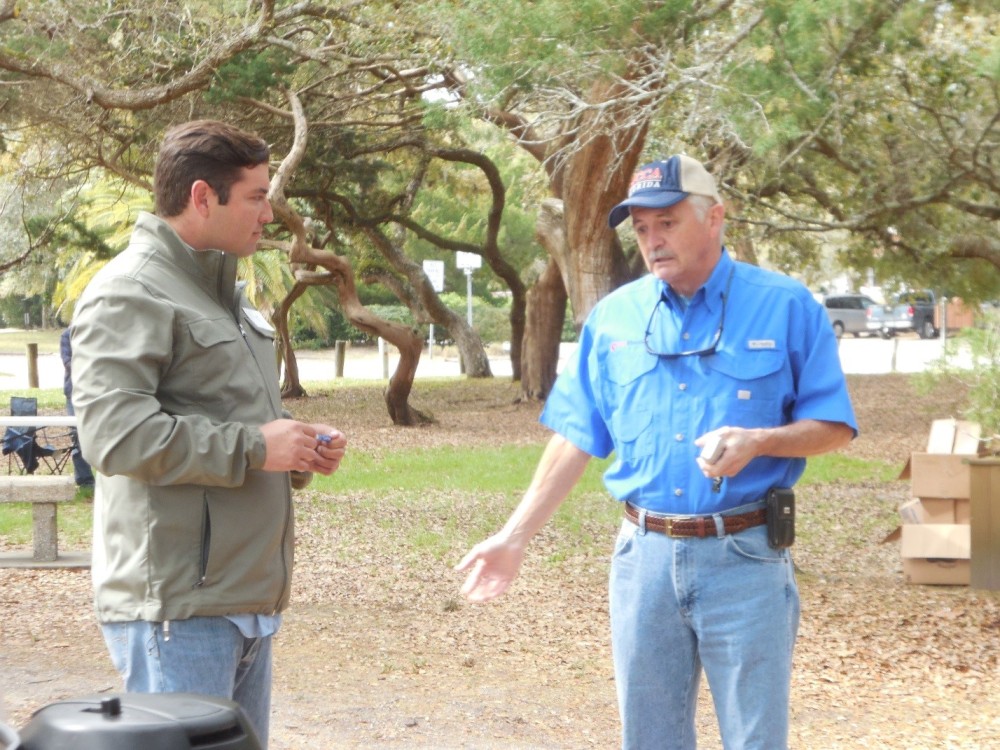The following is a post from a guest writer to the NERRds! This is the fourth in a five part series on oyster stories of northeast Florida! Be sure to look out for more!
Kaitlyn Dietz is currently the Coastal Training Program Specialist at the GTM Research Reserve. Kaitlyn attended Georgia College and State University for her B.S. degree in Biology (2012). Afterwards, she moved to Jacksonville to pursue her M.S. degree in Marine Science from Jacksonville University (2015). Her research focused on understanding relative foraging locations of loggerhead and green sea turtles using the carbon and nitrogen stable isotopes from eggshells. She has been at the GTM Research Reserve in many capacities including being an Environmental Educator under the Education sector, the Usina Oyster Intern under the Research sector, and the Oyster Condition Assessment data analyst under the Northeast Florida Aquatic Preserves.
Stories from the Shuck and Tell.
Didn’t catch the previous installment? Check it out here!
During the 1960’s when Richard Thomas was a young boy, he began fishing with his grandmother. He had family that lived on Robinson Creek as well as in the Intracoastal Waterway “North River”, just north of Vilano. Thomas’ first “oyster adventure” (1970’s) was with his great uncle Cecil Carter. Uncle Cecil lived on Robinson Creek and would take his jonboat to the mouth of Robinson Creek where the water was cleaner. Even then, there was still concern of clean water for the oysters.

Uncle Cecil and Thomas would set a sheet of plywood across the boat and at low tide would collect 7-8 oysters at a time. He would sort and clean them on the boat. When they family harvested, they would only take half a bushel at a time and only one to two times a year generally in January or February. The family took only half a bushel not because of regulations, but because they family only needed that much; the harvesting was only for recreational purposes. On occasion, Uncle Cecil and Thomas would go north to the mouth of Pancho Creek and Indian Creek to get oysters; yet they would still only harvest at the mouth of the rivers due to water quality concerns. When they harvested, Thomas remembers Uncle Cecil using a potato rake to loosen and lift the oysters into the boat. Uncle Cecil would rarely get out of the boat to harvest.

Thomas had a second uncle who lived on the Intracoastal Waterway, Bob Harris. Uncle Bob did not harvest oysters, but harvested clams. He would dig for the clams and keep them in sacks under the dock for fishing. Thomas and his family would occasionally use the clams for clam chowder.
When the family was not harvesting themselves, they would buy oysters from either the Shugart family in St. Augustine or a fish camp on Pine Island (Tolomato River; closed in the 1980’s). Thomas now purchases local oysters from the Price Family and fish markets in St. Augustine such as Kyle’s Seafood.
The family took only half a bushel not because of regulations, but because they family only needed that much; the harvesting was only for recreational purposes.
Reflecting on the vegetation and changes within the waters from the 1960’s to today, Thomas mentioned a high school science project where he collected and categorized invertebrates of Robinson Creek. Thomas remembers plenty of Spartina, but does not remember as much of the black mangroves. The biggest differences that he notices now are that the Robinson Creek waters are lacking the once populous sponges, brittle stars, and pockets of mantis shrimps. Additionally, many of the islands within the river would have cedar trees, which have all died off and been replaced by black mangroves. He does not remember as many people harvesting in Robinson Creek even after being advertised on a fishing channel as a pristine spot to fish and harvest.
Thomas says that local oysters taste better and there is much to be done to help sustain the oyster population. The oysters today are smaller than those he once harvested with his Uncle Cecil. He believes this is become the open harvest beds are overharvested, not allowing time to grow. If the oyster population is to continue, Thomas believes focus should be placed on water quality (consumption of oysters versus clean water) and education of construction workers and those in the waters (construction, runoff, and walking on oyster beds).
